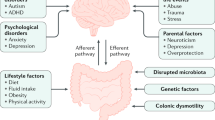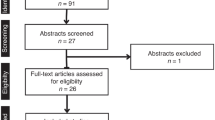Abstract
Functional daytime wetting is a common source of pediatric urologic complaints. Evaluation typically begins in the office setting. In contrast to the adult population, where an inability to maintain voiding control is virtually always considered pathologic, the evaluation of urinary incontinence in children must occur within the context of the child's developmental age. Functional incontinence refers to cases of urinary incontinence in which no structural or neurologic abnormality can be identified. The underlying etiologic mechanisms are heterogeneous, and include disorders of both the storage and voiding phases of the bladder cycle. Optimal treatment of functional daytime wetting depends on an accurate determination of the underlying etiology. Therapeutic options include behavior modification, medication, and aggressive treatment of comorbid conditions such as urinary infection and constipation.
Key Points
-
Daytime wetting in the pediatric population must be evaluated in the context of the patient's developmental age
-
Functional daytime wetting in children is caused by diverse abnormalities in urine storage and voiding
-
It is important to identify and treat comorbid conditions such as urinary infection and constipation
-
Invasive urodynamic studies rarely have a role in the evaluation of functional daytime wetting
This is a preview of subscription content, access via your institution
Access options
Subscribe to this journal
Receive 12 print issues and online access
$209.00 per year
only $17.42 per issue
Buy this article
- Purchase on Springer Link
- Instant access to full article PDF
Prices may be subject to local taxes which are calculated during checkout



Similar content being viewed by others
References
Sillen U (2004) Bladder function in infants. Scand J Urol Nephrol Suppl 215: 69–74
Goellner MH et al. (1981) Urination during the first three years of life. Nephron 28: 174–178
Brazelton TB et al. (1999) Instruction, timeliness, and medical influences affecting toilet training. Pediatrics 103: 1353–1358
Bloom DA et al. (1993) Toilet habits and continence in children: an opportunity sampling in search of normal parameters. J Urol 149: 1087–1090
Hellstrom AL et al. (1990) Micturition habits and incontinence in 7-year-old Swedish school entrants. Eur J Pediatr 149: 434–437
Norgaard JP et al. (1998) Standardization and definitions in lower urinary tract dysfunction in children. International Children's Continence Society. Br J Urol 81 (Suppl 3): 1–16
Nevéus et al. (2006) The standardization of terminology of lower urinary tract function in children and adolescents: report from the Standardisation Committee of the International Children's Continence Society. J Urol 176: 314–324
Hoebeke P et al. (1999) Assessment of lower urinary tract dysfunction in children with non-neuropathic bladder sphincter dysfunction. Eur Urol 35: 57–69
Deluca FG et al. (1962) The dysfunctional 'lazy' bladder syndrome in children. Arch Dis Child 37: 117–121
Hinman F Jr (1986) Nonneurogenic neurogenic bladder (the Hinman syndrome)—15 years later. J Urol 136: 769–777
Scharf MB et al. (1987) Childhood enuresis. A comprehensive treatment program. Psychiatr Clin North Am 10: 655–666
Loening-Baucke V (1997) Urinary incontinence and urinary tract infection and their resolution with treatment of chronic constipation of childhood. Pediatrics 100: 228–232
O'Regan S et al. (1986) Constipation a commonly unrecognized cause of enuresis. Am J Dis Child 140: 260–261
Kaneti J et al. (1984) Case profile: urinary retention due to fecal impaction in a child. Urology 23: 307
O'Regan S et al. (1985) Constipation, bladder instability, urinary tract infection syndrome. Clin Nephrol 23: 152–154
van Gool JD et al. (1984) Bladder–sphincter dysfunction, urinary infection and vesico-ureteral reflux with special reference to cognitive bladder training. Contrib Nephrol 39: 190–210
Smellie JM et al. (1988) Prophylactic co-trimoxazole and trimethoprim in the management of urinary tract infection in children. Pediatr Nephrol 2: 12–17
van Gool JD et al. (1992) Historical clues to the complex of dysfunctional voiding, urinary tract infection and vesicoureteral reflux. The International Reflux Study in Children. J Urol 148: 1699–1702
Bauer SB (2002) Special considerations of the overactive bladder in children. Urology 60: 43–49
Wehby MC et al. (2004) Occult tight filum terminale syndrome: results of surgical untethering. Pediatr Neurosurg 40: 51–58
Wan J et al. (1993) Stress leak point pressure: a diagnostic tool for incontinent children. J Urol 150: 700–702
Saedi NA et al. (2003) Natural history of voiding dysfunction. Pediatr Nephrol 18: 894–897
Hellstrom AL et al. (1987) Rehabilitation of the dysfunctional bladder in children: method and 3-year followup. J Urol 138: 847–849
Wiener JS et al. (2000) Long-term efficacy of simple behavioral therapy for daytime wetting in children. J Urol 164: 786–790
Pohl HG et al. (2002) The outcome of voiding dysfunction managed with clean intermittent catheterization in neurologically and anatomically normal children. BJU Int 89: 923–937
Allen TD (2003) Forty years experience with voiding dysfunction. BJU Int 92 (Suppl 1): 15–22
Curran MJ et al. (2000) The overactive bladder in childhood: long-term results with conservative management. J Urol 163: 574–547
Nijman RJ (2004) Role of antimuscarinics in the treatment of nonneurogenic daytime urinary incontinence in children. Urology 63: 45–50
Jonville AP et al. (1993) Adverse effects of oxybutynin chloride (Ditropan) in pediatrics [French]. Arch Fr Pediatr 50: 27–29
Hjalmas K et al. (1992) Functional daytime incontinence: pharmacological treatment. Scand J Urol Nephrol Suppl 141: 108–116
Meadow SR (1990) Day wetting. Pediatr Nephrol 4: 178–184
Sundin T et al. (1973) The sympathetic innervation of the urinary bladder and urethra in the normal state and after parasympathetic denervation at the spinal root level. An experimental study in cats. Scand J Urol Nephrol 7: 131–149
Austin PF et al. (1999) α-Adrenergic blockade in children with neuropathic and nonneuropathic voiding dysfunction. J Urol 162: 1064–1067
Rushton HG (1993) Older pharmacologic therapy for nocturnal enuresis. Clin Pediatr (Phila) 10–13
Fouron JC et al. (1971) ECG changes in fatal imipramine (Tofranil) intoxication. Pediatrics 48: 777–781
Sureshkumar P et al. (2003) Treatment of daytime urinary incontinence in children: a systematic review of randomized controlled trials. J Urol 170: 196–200
Sugar EC et al. (1982) Urodynamic biofeedback: a new therapeutic approach for childhood incontinence/infection (vesical voluntary sphincter dyssynergia). J Urol 128: 1253–1258
McKenna PH et al. (1999) Pelvic floor muscle retraining for pediatric voiding dysfunction using interactive computer games. J Urol 162: 1056–1063
Porena M et al. (2000) Biofeedback successfully cures detrusor–sphincter dyssynergia in pediatric patients. J Urol 163: 1927–1931
Chin-Peuckert L et al. (2001) A modified biofeedback program for children with detrusor–sphincter dyssynergia: 5-year experience. J Urol 166: 1470–1475
Herndon CD et al. (2001) Interactive computer games for treatment of pelvic floor dysfunction. J Urol 166: 1893–1898
Erickson BA et al. (2003) Polyethylene glycol 3350 for constipation in children with dysfunctional elimination. J Urol 170: 1518–1520
Hein HA et al. (1978) Who should accept primary responsibility for the encopretic child? A successful pediatric program based on dietary control, bowel training, and family counseling. Clin Pediatr (Phila) 17: 67–70
Author information
Authors and Affiliations
Corresponding author
Ethics declarations
Competing interests
The authors declare no competing financial interests.
Rights and permissions
About this article
Cite this article
Vemulakonda, V., Jones, E. Primer: diagnosis and management of uncomplicated daytime wetting in children. Nat Rev Urol 3, 551–559 (2006). https://doi.org/10.1038/ncpuro0584
Received:
Accepted:
Issue Date:
DOI: https://doi.org/10.1038/ncpuro0584
This article is cited by
-
Long-term prospective evaluation of an inpatient voiding reeducation program for lower urinary tract conditions in children
International Urology and Nephrology (2013)



